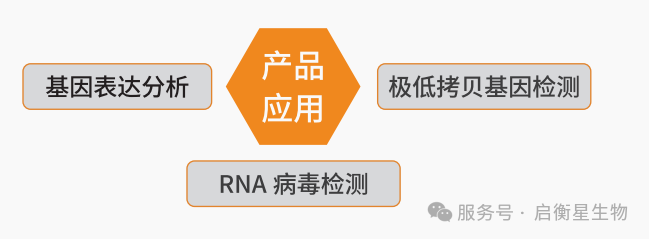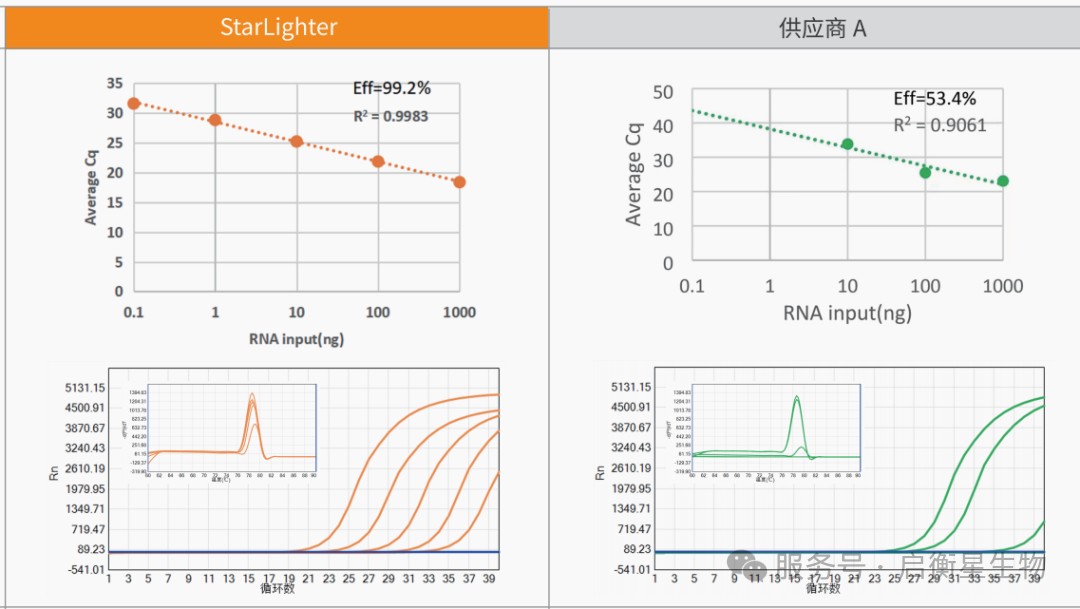StarLighter Reverse Transcription Super Mix (with gDNA Removal) is developed based on a next-generation reverse transcriptase (a fourth-generation genetically engineered enzyme). The mix contains the required reverse transcriptase, random primers, Oligo dT, and other reaction components, allowing the RNA template to be added directly to the system for reverse transcription. It also includes a gDNA Removal buffer and a highly efficient gDNA removal buffer, effectively removing gDNA contamination during reverse transcription. This new generation of reverse transcriptase is heat-resistant and exhibits excellent reverse transcription activity at temperatures between 42°C and 65°C, making it highly effective for reverse transcription of complex RNA structures.
1. High reverse transcription efficiency, accurately reflecting template information
2. High temperature resistance and effective reverse transcription of complex RNA
3. Remove gDNA contamination in one step without affecting reverse transcription performance
4. Compatible with high GC/AT templates and degraded samples, easy to operate

1. Efficient removal of gDNA
1.1 Mouse total RNA with different starting amounts (0.1ng, 1ng, 10ng, and 1000ng) containing 10% gDNA contamination was treated with gDNA and reverse transcribed, followed by qPCR quantification to evaluate the gDNA removal ability of StarLigher Reverse Transcription Super Master Mix (with gDNA Removal) and its reverse transcription performance in the presence of gDNA contamination. The results are shown in the figure below:

1.2 We performed gDNA removal and reverse transcription on 100ng of mouse total RNA containing varying amounts of gDNA contamination, followed by qPCR quantification to evaluate the gDNA removal capability of StarLigher Reverse Transcription Super Mix (with gDNA removal) and its reverse transcription performance in the presence of gDNA contamination. The results are shown in the following figure:

2. Reverse transcription quantitative results accurately reflect the template amount information
RNA input and qPCR quantitative output showed excellent linearity. Different reverse transcription reagents were used to reverse transcribe different starting amounts of mouse total RNA (0.1ng, 1ng, 10ng, and 1000ng), followed by qPCR quantification. The linear relationship between RNA input and qPCR Ct values was compared using different reverse transcription reagents. The results are shown in the figure below:

